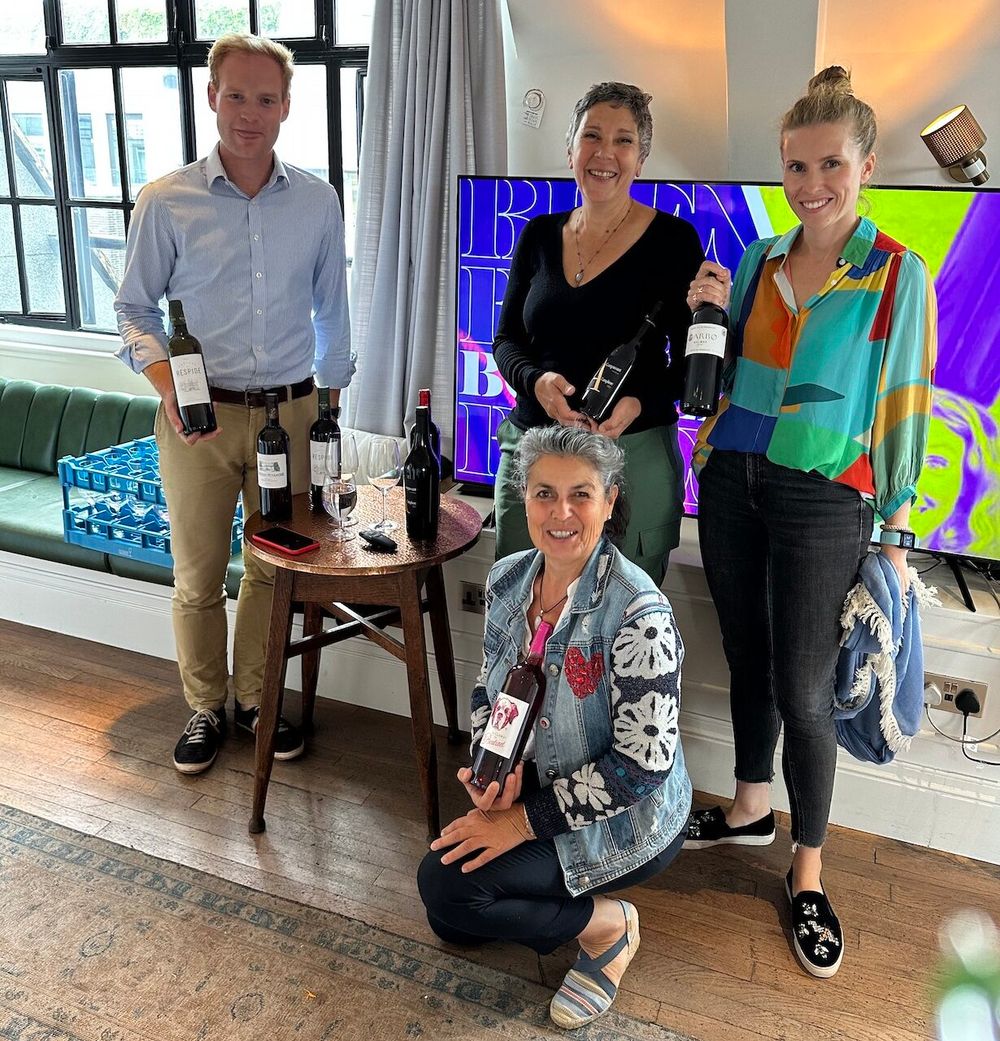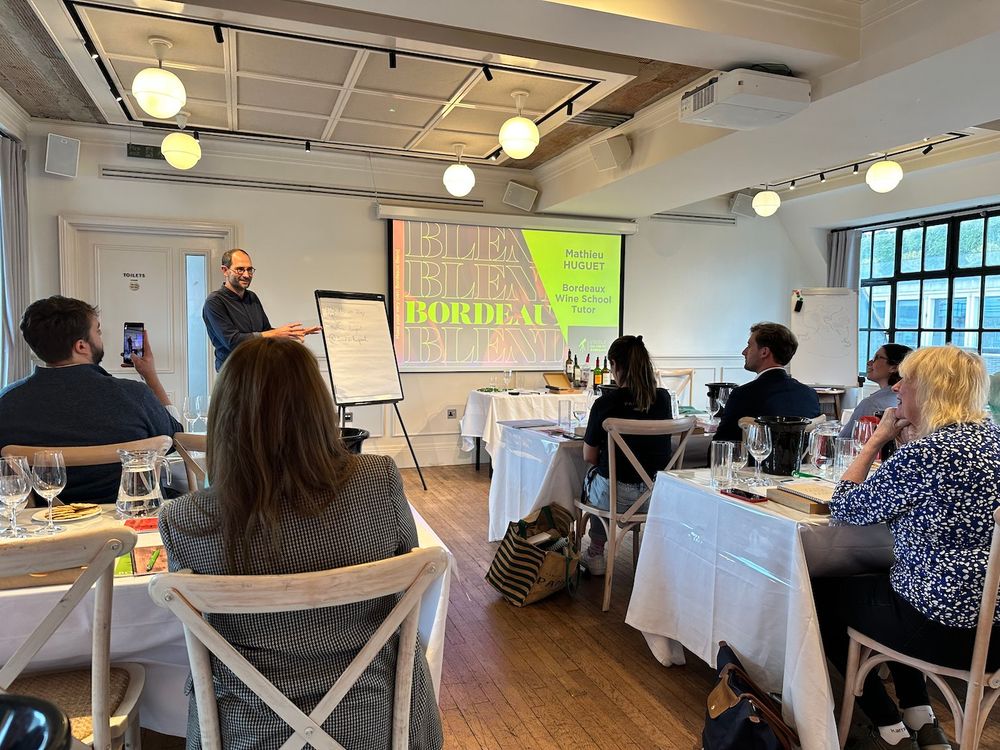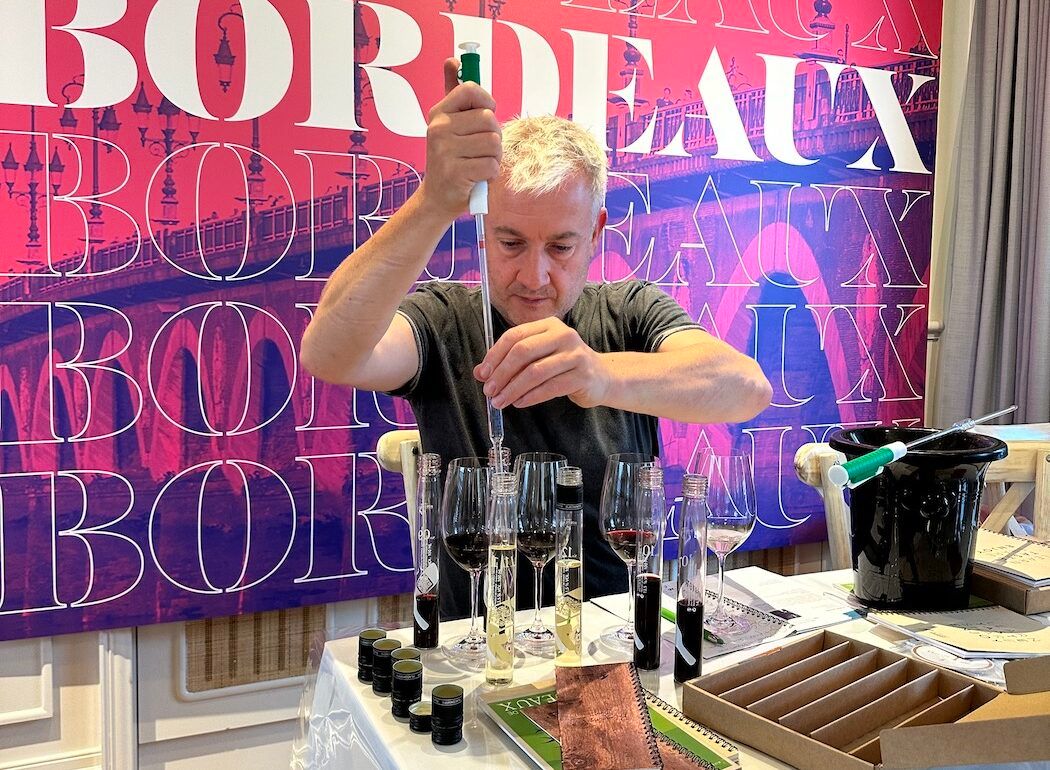“How genuinely refreshing to create, as well as taste – a practical and engaging way to celebrate what today’s Bordeaux is all about,” says Kermode about the Bordeaux Blend sessions.

Bordeaux wine educator Mathieu Huguet, London session September 28
For years, the buyer of a bottle from Bordeaux was not expected to take much interest in how the wine was put together: back labels were rare, information was scarce – it was, quite frankly, none of our business. These days, however, it’s a different story: Bordeaux is about caring and sharing, with more than three quarters of its vineyards having a certified environmental approach, its once closely guarded practices opened up for us all to see.
Whether the Bordelaise actually invented blending is still disputed, but nobody can deny that they made it their own, with the red Bordeaux blend ubiquitous around the world and its white counterpart also copied extensively elsewhere. Though now synonymous with wines of great complexity and depth, the technique was actually developed as a canny insurance policy, to even out the effects of erratic weather conditions, so it is arguably as relevant now as it ever was – and might also explain why there’s famously never ‘a bad vintage’ in Bordeaux.
Bordeaux’s new faces

Also presenting (clockwise l-r) Pierre Edouard Chatin, Francine Decazes, Nathalie Depoizier Escuredo, Margaux Arbo
With its estimable history, Bordeaux could be forgiven for trading on its past, but as the largest wine-producing region in France, making 650 million bottles a year, it needs to stick with the times, to ensure its wines – these days usually made in a fresher, more accessible style – remain relevant to a new generation of drinkers.
To that end, the Bordeaux blend trade sessions, scheduled in two-hour slots across the day, began with a series of short presentations from winemakers, projecting the new faces of the region. The themes: women winemakers, climate change, biodiversity and New Wave reds, with each speaker also showing two of their wines, carefully chosen to represent the newer styles we can find in the region.
Though three of our four speakers were female, the first, Margaux Arbo, of Vignobles Arbo, took on the session dedicated to women winemakers, reminding us that Bordeaux was run by females during the two world wars of the twentieth century, as the men turned their attention to fighting. Representing the fifth generation of her family, Arbo studied in Burgundy (a ‘foreign country’, she joked) and has clearly relished the experience, using Burgundian barrels, alongside concrete eggs, for the maturation of her delicious (and notably fresh) wines.
Next, a presentation on the impact of climate change, from Pierre Edouard Chatin, of Château de Respide, who explained that the issue went well beyond heat spikes and warmer temperatures, to freak frost and hailstorms, telling us: “What is now a danger is the frequency and intensity of these climate events.” To try to counter this, Bordeaux has committed itself to being carbon neutral by 2050, targeting viticultural practices, glass and packaging, freight, energy efficiency and also methods of carbon capture.
A talk on biodiversity followed, from Nathalie Depoizier Escuredo of Château Boutinet, where grass helps keep the soil cool, sheep graze between the vines, while also fertilising them, meadow flowers encourage pollinators, land is regularly left fallow to give it a rest, and yoga sessions are offered to visitors who can also sample the winery’s clairet, a fresh, deep pink heritage rosé style that’s now back in fashion.
Finally, a talk devoted to new reds, from Francine Decazes of Vignobles Decazes, a family winery that has embraced organic viticulture and uses clay amphora for the maturation of its wines, which you would be hard-pressed to identify as from Bordeaux, tasted blind.
Let the blending begin

Each session was fast paced so, after a brief stop at the ‘Bordeaux Casino’, it was time to move on to the blending room. The Casino, incidentally, was a betting challenge to identify the varieties in a blend, the maturation vessel used, and even its age, this was not my strongest hour and a salutary reminder of how much I love a label.
“The whole must be greater than the sum of its parts,” warned winemaker and Bordeaux Ecole du Vin lecturer, Mathieu Huguet, as he started the blending session by handing us our pipettes and instructed us to produce two blends, a white and a red, telling us to “focus on the structure, for the nose will evolve.”
Though Bordeaux has recently approved two new white varieties in response to climate change – Alvarinho and Liliorila – we focused on the two grapes for which white Bordeaux is most famous: Sauvignon Blanc and Sémillon. Bordeaux’s white blends are, in my opinion, criminally underrated, so it was a pleasure to combine two single varietal wines and play with the impact on aromatics (most notable with Sauvignon, of course), depth of flavour and also texture (Sémillon playing the starring role with its waxy charm). In the end, I settled on 70% Sauvignon and 30% Sémillon for my new Blanc de Kermode. I tend to favour the latter grape and I can be a little sniffy about Savvy too, so this composition surprised me, but I felt it required the freshness and immediacy of the Sauvignon.
My prejudices were about to challenged once again, by the red blend. Though the lexicon of Bordeaux red varieties has just been expanded – with Arinarnoa (a crossing of Tannat and Cabernet Sauvignon), Castets (an historic Bordeaux variety), Marselan (a crossing of Grenache and Cabernet Sauvignon) and Touriga Nacional (of Douro fame) joining the approved list – we were given the traditional Bordelaise staples of Merlot, Cabernet Sauvignon, Cabernet Franc and Malbec (aka Côt), to create our new wine (we could also have used Petit Verdot and Carménère, of course).
Though it has nothing to do with Sideways, the movie that did for Merlot, I am not that particular grape’s greatest fan, so I didn’t expect to use too much of it in my inaugural Château Haut Kermode, not least because climate change has also made the variety bigger and boozier. They say Cab is King, but I was reminded that, for all the class it brings, a little Cabernet Sauvignon goes a long way, in terms of both structure and stridency. I am a big Cabernet Franc fan and it certainly upped the freshness, though I had to dial it back slightly, as my blend became earthier and faintly greener. Ditto the Malbec, which, used judiciously, added vibrancy, but also raised the rusticity.

School was never like this: Bordeaux Blend, London session
The revelation of the session?
Yep, you guessed it: that pesky Merlot… starting with a relatively small amount, I trepidatiously upped the percentage repeatedly, as I sought to balance the different components of the blend to create the je ne sais quoi that characterises a typical Bordeaux red. In the end, I settled at a whopping 45% Merlot, with 30% Cabernet Sauvignon, 20% Cabernet Franc and just 5% Malbec, to produce a balanced blend with the approachability and seductive charm that you’d expect from a bottle bearing the Kermode name.
Blending is a fine art – and we had around forty minutes to master it – so this was a chance to better understand the process, rather than an attempt to recruit a bunch of new winemakers, but how genuinely refreshing to create, as well as taste – a practical and engaging way to celebrate what today’s Bordeaux is all about.
The Buyer would like to reassure all readers that there are no plans to commercially release Blanc de Kermode or Château Haut Kermode either now or anytime in the future…































